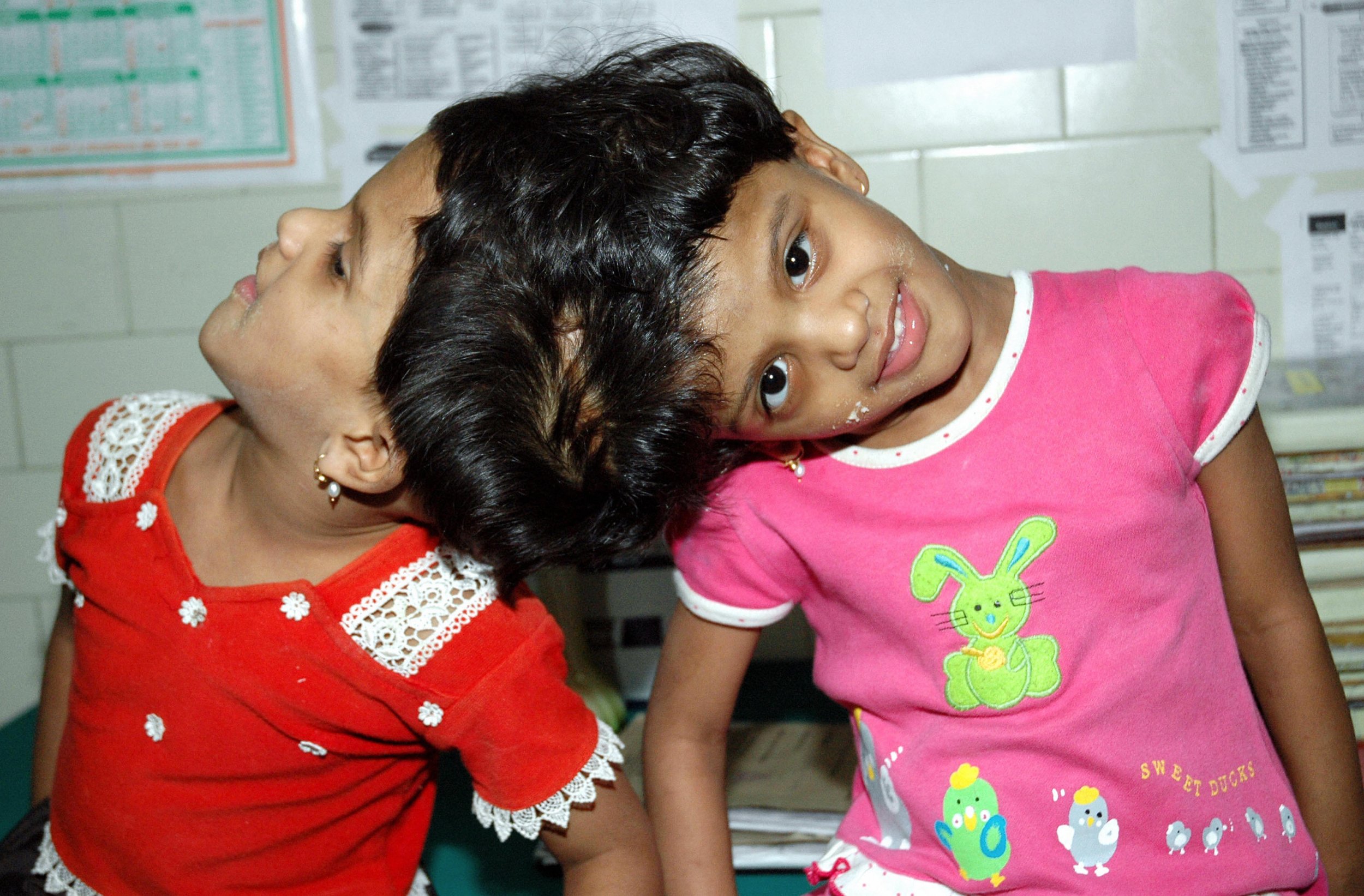
It's very rare for twins to be born conjoined at the skull. It's rarer still for twins like Krista and Tatiana Hogan—whose skull forms a complete shell around both their brains—to come into the world. Twin Life: Sharing Mind and Body, a recent documentary about the girls, who share more than a skull, raises the question: do these girls share a mind, or even a blended sense of self?
Krista and Tatiana's brains are joined by a "thalamic bridge." To some extent, it seems that what one girl feels, the other can as well. A review of the film in the Canadian magazine The Walrus examines what the sisters' situation says about western society's changing idea of selfhood.
A clip of the documentary shows Felicia, their mother, lightly touching Tatiana on different parts of her body while Krista's eyes are closed. Felicia asks Krista, who keeps her eyes shut, where her fingers are making contact. "Her cheek," Krista responds, correctly. "Her knee."
The twins have popped in and out of the news cycle over the years. Their birth and survival are remarkable stories in and of themselves. Craniopagus twins—those born joined at the head—reportedly make up 2 percent of conjoined twins.
A New York Times Magazine article about the girls from 2011 explains their unique brain anatomy: their brains are connected by what the girls' neurosurgeon dubbed a "thalamic bridge." According to the Times, the doctor thinks the thalamus—a part of the brain that has been implicated in sensation, movement and consciousness—of one girl is connected to the other.
Tatiana and Krista Hogan are extraordinary little girls. Watch as our cameras capture the tumult of their daily life in Vernon, BC. https://t.co/iTjBYywqnT pic.twitter.com/uZjxTPD7nt
— CBC Docs (@cbcdocs) November 13, 2017
Journalist Susan Dominus recounts watching Krista and Tatiana taking turns drinking from a cup. As one took a sip, the other would twitch and reach for her own stomach. Dominus also writes about clear differences she observed between the girls: at that time, the girls' mother described Krista as more of a bully than Tatiana.
A cognitive neuroscientist offered a possible alternative explanation for why Krista and Tatiana may seem to know each other's feelings and thoughts: "If they're really close, through minute movements that one makes—maybe a typical movement her sister cannot see, but can feel—the other sister intuits the association," he told The New York Times Magazine.
But, several years later, the girls reportedly state in the documentary that they're able to hold nonverbal conversations in their own minds.
As The Walrus notes, the idea of whether the two girls share a self is very much dependent on the idea of having private, individual thoughts and experiences, a line that the twins' situation seems to blur.
When Dominus asked for Felicia's thoughts on the idea that her daughters were somehow two in one, Dominus writes that Felicia bristled, responding that they are "two normal little girls who happen to go through life sharing a bubble.
Uncommon Knowledge
Newsweek is committed to challenging conventional wisdom and finding connections in the search for common ground.
Newsweek is committed to challenging conventional wisdom and finding connections in the search for common ground.
About the writer
Joseph Frankel is a science and health writer at Newsweek. He has previously worked for The Atlantic and WNYC.
To read how Newsweek uses AI as a newsroom tool, Click here.








